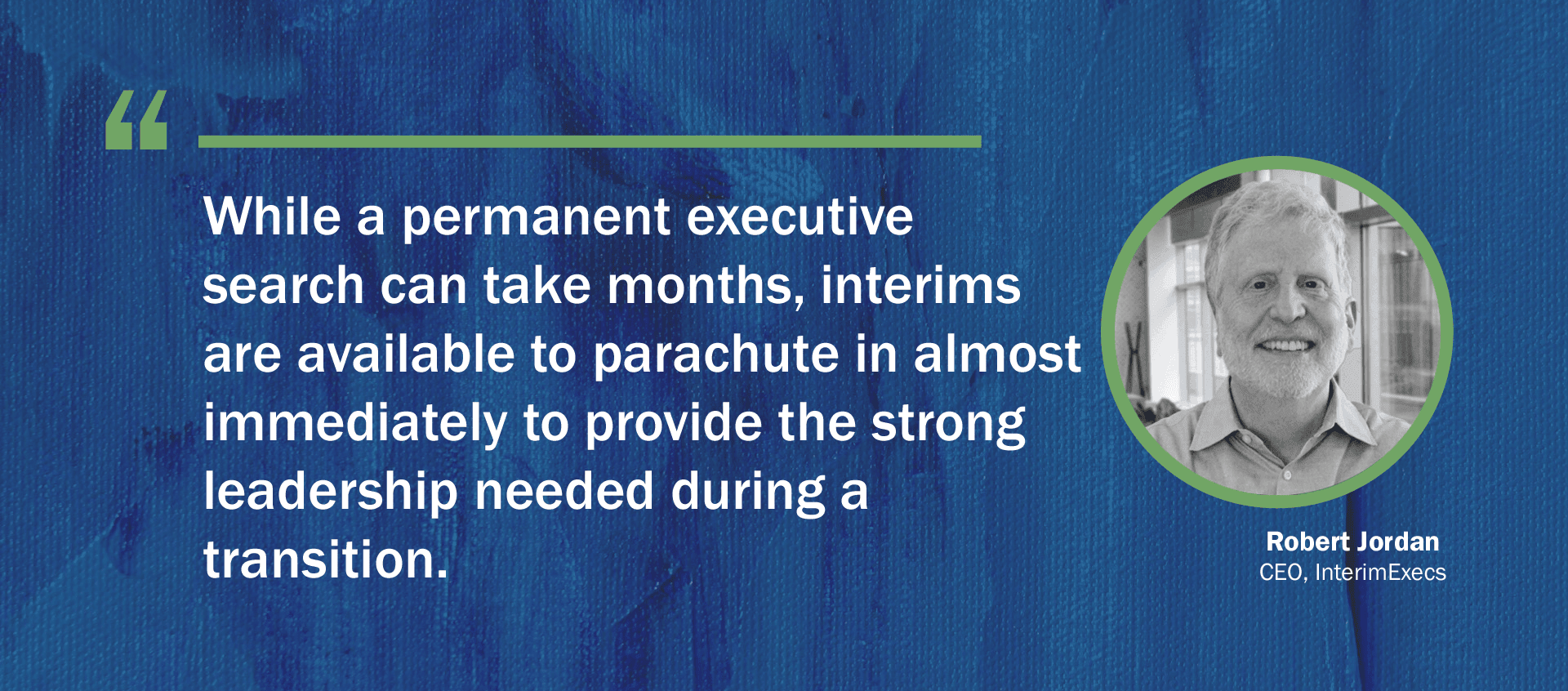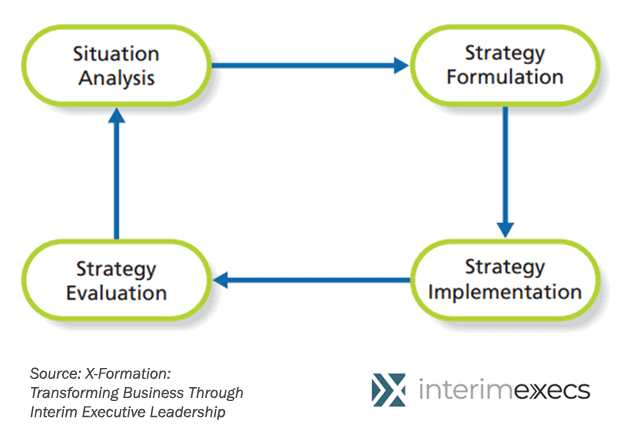The Process for Engaging an Interim Executive

Your Complete Guide to Interim Management — Chapter 7: The Process for Engaging an Interim Executive
The number of CEOs, CFOs and other execs across the C-suite retiring or leaving their jobs is continuing in record numbers. While the vacancies’ disruption reverberates through the organization, executive recruiters can spend six months — or more — identifying candidates to permanently fill the c-suite positions.
No organization can thrive without a capable leader at the helm for that long. That’s why organizations increasingly turn to interim c-level executives who can keep the organization moving forward while the executive search firm works through the interview process looking for qualified candidates who will join the leadership team as a permanent hire.
It’s important to understand that engaging an interim c-suite executive is different from bringing on board a new full-time top executive.
Here are the steps to take to ensure a good fit with the interim c-level executive and the organization.
How to Bring on an Interim Executive
1) Define the time commitment
First, organizations need to know how much of an interim executive’s time they will need. If the company is in crisis and needs an interim to lead the transition, that will be a full-time-plus commitment. Conversely, if the company is a start-up in need of experienced leadership to guide growth, a part-time or fractional executive who works a few hours a day or a few days a week can be a cost-effective way to get rock star leadership for a fraction of the cost. In these cases, the fractional executive could have multiple, parallel engagements running simultaneously.
2) Set goals, deliverables and expectations
Once you have identified the time commitment needed, it’s time for the owner, board, investors or CEO to take an honest look at issues or opportunities the interim will address and come up with a list of the goals and expectations they have for the assignment. You also will need to determine the length of the engagement and whether it is for a fixed duration, based upon the completion of key milestones, or a general timeline with check-in dates.
3) Find the right executive
Next, it’s time to begin interviewing potential interims. While it’s tempting to only consider executives with experience in your industry or business sector, that may not be the best approach. InterimExecs RED Team members, for example, tend to have a breadth of experience across specialties, industries, and business sectors. We believe that cross-pollination gives them a unique ability to use knowledge gained in one sector to find creative solutions to the challenges in another.
4) Negotiate the deal
Once you have chosen the right interim candidate, it’s time to negotiate the deal. Most likely, the interim will expect a cash-based fee for services rendered. If the assignment involves significant potential for upside to the company – either actions in saving or fixing assets, or creating new value – the interim executive may request a performance-based additional fee. In cases where the interim executive believes their efforts will result in orders of magnitude or creation of new value, they may request or require some form of equity, warrant, or other non-cash compensation.
In addition, many interims will be commuting to their temporary assignment. They will need a hotel, car, and meal reimbursement in addition to the management fee.
5) Assignment Kickoff
In some cases, interim executives begin by committing to an initial, short-term assessment or discovery project. That could take up to a month as the interim makes a frank assessment of the company and its current state and sets out a go-forward plan.
This initial assessment limits the risk the organization takes in contracting with the interim executive, and also allows the interim an opportunity to determine if the project represents a best use of her skills and abilities. If both sides agree, the interim then comes on board to implement the go-forward plan.
Whether work begins with an assessment or an open-ended agreement, it will commence on contract signing and fulfillment of any other upfront terms. Because interims believe in the “go anywhere, anytime” mantra, work can commence within days – far faster than any standard permanent hiring process.

The Complete Guide to Interim Management
-
- 01 What is an Interim Executive?
- 02 When is an Interim Manager the Right Choice?
- 03 When an Interim Executive is Not a Good Option
- 04 What’s the Difference Between an Interim Executive and a Consultant?
- 05 How do Interim Execs Approach Assignments?
- 06 Interim Executive Recruitment: Making the Right Match
- 07 The Process for Engaging an Interim Executive
- 08 How to Prepare Your Company for an Interim Leader

The Bottom Line
When you have a vacancy on your executive team, you can’t risk leaving the organization without a leader for the time it can take an executive recruiting firm to wade through the c-level recruitment process.
Interim executives provide strong leadesrhip that is difference from the permanent hire. Interims excel at jumping into periods of transition and instability so will immediately give confidence to the team, investors and board, while identifying opportunities and ensuring the organization continues to move forward while the perm search takes place.
Continue Reading: Chapter 8 – How to Prepare Your Company for an Interim Leader

FREE DOWNLOAD
Top Trends Driving the Growth of Interim Management
▶ 5: How do Interim Execs Approach Assignments?
▶ 6: Interim Executive Recruitment: Making the Right Match
▶ 7: The Process for Engaging an Interim Executive
▶ 8: How to Prepare Your Company for an Interim Leader.

